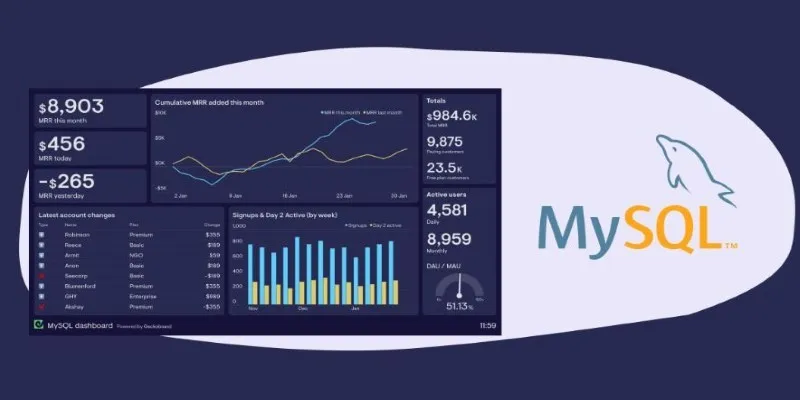Product Roadmaps: A Complete Guide
The product roadmap offers more than just a timeline; it provides strategic guidelines that determine how a product will evolve over time. Essential at all stages of product development, a product roadmap connects stakeholders with development tasks, steering projects toward successful outcomes. This comprehensive guide explains the fundamentals of product roadmaps, including their purpose and construction process, to show you how to develop a path that leads your product to success.
What is a Product Roadmap? Defining the Purpose and Scope
 A product roadmap
outlines the main steps in developing a product from a strategic standpoint.
It details what the product aims to achieve and every aspect of its
development plan, establishing directions before delving into technical
details or scheduling.
A product roadmap
outlines the main steps in developing a product from a strategic standpoint.
It details what the product aims to achieve and every aspect of its
development plan, establishing directions before delving into technical
details or scheduling.
Key Characteristics of a Product Roadmap:
- Strategic: Aligned with the overall business strategy and product vision.
- Visual Clarity: Charts or diagrams make the roadmap simple to understand and share.
- Adaptive: Continuously evolves to meet current market demands, customer insights, and business directions.
- Collaborative: Involves product management, engineering, design, marketing, and sales teams.
- Communicative: Shares the product’s direction with internal teams, external partners, and customers.
Why is a Product Roadmap Important? The Benefits Unveiled
Creating a detailed product roadmap offers numerous advantages:
- Focus: Keeps all participants aligned with the product’s objectives.
- Clarity: Effectively conveys the product strategy to diverse audiences.
- Guidance: Shows stakeholders the features and projects that most advance the strategy.
- Planning: Facilitates long-term planning and resource allocation.
- Decision-Making: Helps teams decide on successful development strategies.
- Transparency: Builds trust with stakeholders by making company activities public.
- Consistency: Ensures the team stays on target with major tasks and objectives.
Key Elements of a Product Roadmap
A standard product roadmap includes these components:
- Product Vision: Defines the main target and future path of the project.
- Objectives: Sets SMART-aligned performable targets.
- Milestones: Supports the product vision to achieve intended outcomes.
- Features: Details individual product elements and updates for release.
- Timeline: Indicates when each feature will be developed and significant milestones will occur.
- Metrics: Relies on selected Key Performance Indicators (KPIs).
Types of Product Roadmaps
 Product roadmaps
come in various types to suit specific business needs and audience roles.
Product roadmaps
come in various types to suit specific business needs and audience roles.
- Strategic Roadmap: Sets long-term goals and objectives.
- Technology Roadmap: Outlines necessary technology upgrades and adjustments.
- Release Roadmap: Displays future versions of product functionality on a timeline.
- Team Roadmap: Details development steps for internal teams.
- Customer Roadmap: Provides a basic outline of future product directions for external audiences.
Creating a Product Roadmap: A Step-by-Step Guide
- Define Vision: Establish the product vision and strategic milestones, clarifying the specific challenges and benefits for users.
- Engage Stakeholders: Gather feedback from customers and teams, including sales, marketing, and engineering.
- Prioritize: Use the MoSCoW or RICE framework to rank project and feature importance.
- Select Template: Choose a roadmap template that fits your needs and audience. Many free and paid templates are available online.
- Integrate Features: Input features and projects into the roadmap, detailing timelines and expected outcomes.
- Communicate: Share the roadmap with all stakeholders, clearly explaining the product strategy.
- Update Regularly: Review and revise the roadmap as market conditions and feedback evolve.
Tools for Creating and Managing Product Roadmaps
| Tool | Description | Key Features |
|---|---|---|
| Productboard | A product management platform for defining, prioritizing, and communicating product strategy. | Roadmap visualization, feature prioritization, customer feedback management, integration with other tools. |
| Aha! | Software for creating, sharing, and tracking product plans. | Roadmap visualization, strategic planning, feature prioritization, release management, integration with other tools. |
| Jira | A project management tool also used for product roadmaps. | Task management, workflow automation, issue tracking, roadmap visualization, integration with other tools. |
| Trello | A visual project management tool for basic roadmapping. | Kanban boards, list management, task assignment, collaboration features, roadmap visualization (with Power-Ups). |
| Asana | A work management platform for planning, organizing, and tracking, including product roadmaps. | Task management, project tracking, collaboration features, timeline view, roadmap visualization, integration with other tools. |
| Google Sheets/Slides | Basic, free tools for creating simple roadmaps. | Customizable templates, collaboration features, basic roadmap visualization, requiring more manual effort. |
Best Practices for Effective Product Roadmapping
Keep your roadmap straightforward by focusing on key projects that drive business success. Present your product timeline to stakeholders and incorporate their feedback to ensure it aligns with actual demands and deadlines. Be ready to adapt the roadmap as market conditions and customer feedback change. Clearly communicate updates with stakeholders and adjust plans as necessary. Use graphics and illustrations to enhance understanding of the roadmap.
Common Mistakes to Avoid
Avoid turning your product roadmap into a detailed project plan. Ensure the roadmap is grounded in valid customer feedback to succeed. Setting unrealistic deadlines can lead to team dissatisfaction and burnout. Ensure effective communication of roadmap details to avoid confusion. Regularly update the roadmap to reflect changing conditions and objectives.
The Future of Product Roadmapping
Product roadmapping will continue to evolve with industry trends influencing its direction:
- Automation will manage routine processes, identifying market directions and feature priorities.
- Roadmapping tools will enhance collaboration, allowing teams to work synchronously.
- Integration with data analytics will provide actionable insights and market feedback.
- Development plans will increasingly focus on customer satisfaction and experience.
Conclusion
A product roadmap is a crucial tool for aligning team members and development efforts with customer goals. By following established methodologies and guidelines, your roadmap can effectively drive product development and deliver customer value. Leveraging product roadmapping tools allows you to adapt your plan to meet business objectives efficiently.
On this page
What is a Product Roadmap? Defining the Purpose and Scope Why is a Product Roadmap Important? The Benefits Unveiled Key Elements of a Product Roadmap Types of Product Roadmaps Creating a Product Roadmap: A Step-by-Step Guide Tools for Creating and Managing Product Roadmaps Best Practices for Effective Product Roadmapping Common Mistakes to Avoid The Future of Product Roadmapping ConclusionRelated Articles

6 Ways Businesses Are Using AI in eCommerce to Stay Competitive

Building a Winning Facebook Ad Strategy

Maximize Your Customer Understanding with User Personas: A Powerful Tool
Popular Articles

Free MySQL Visualization Tools: 5 Options to Simplify Your Data Management

A Simple Guide to Turning MXF Videos into MP4

Discover the Best Free and Paid 3D Video Makers for Windows

Top Sites for Learning Go Programming Online

Top Terminal Emulators That Work Across Platforms 2025

Ultimate Guide to Google Calendar Settings

Convert SWF to MPG Easily: Online & Offline Methods That Work

Best Vlog Editors for Every Device: 8 Tools You Should Try

Boost Network Security Using a Free API Port Summary Tool

KineMaster Without Limits: Removing the Logo the Right Way

Discover the Top 8 AI Meeting Assistants in 2025 to Boost Productivity and Stay Organized

 mww2
mww2